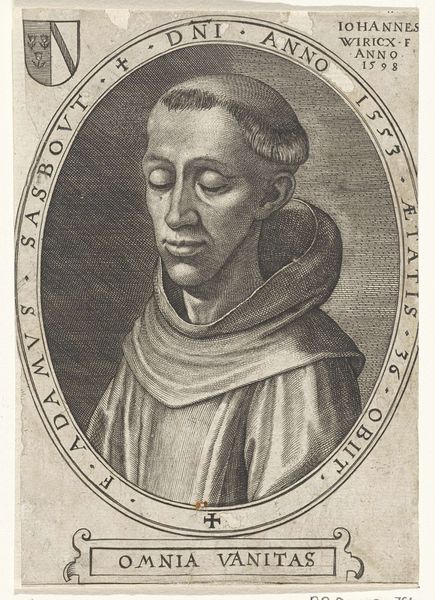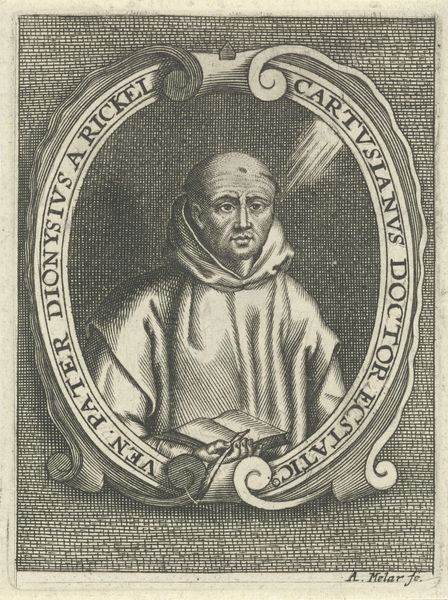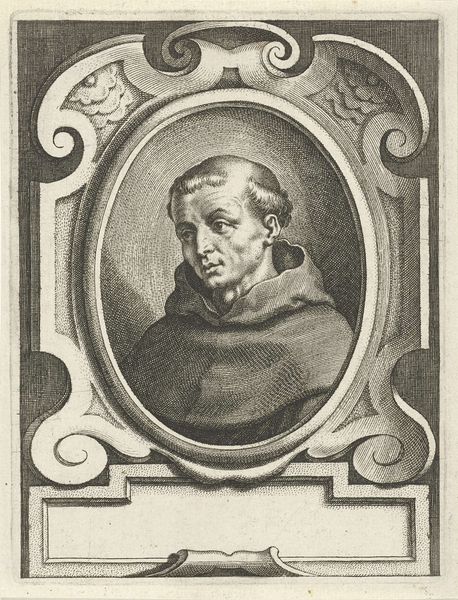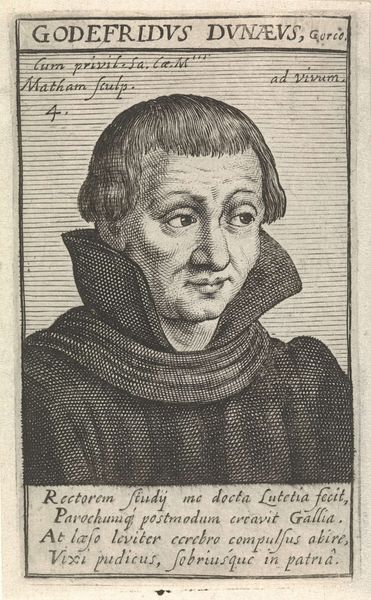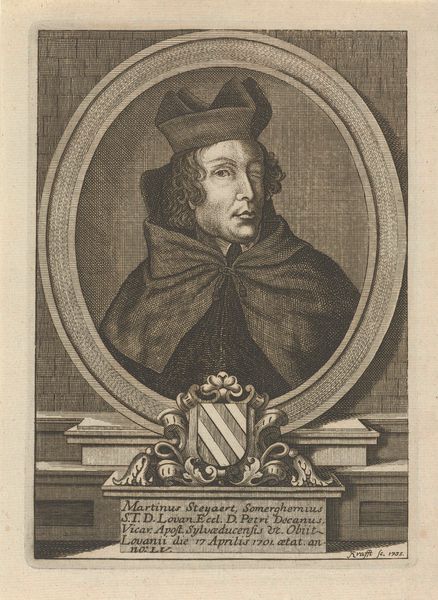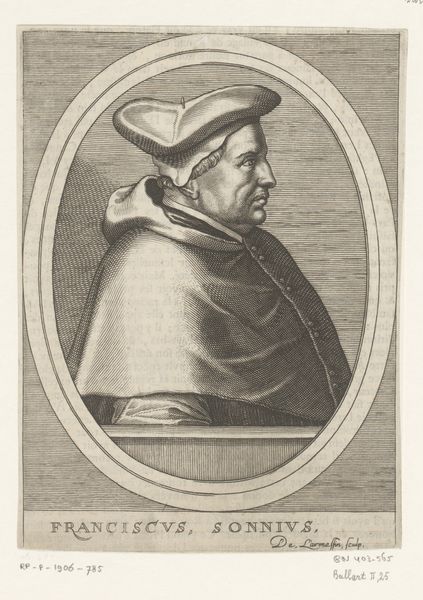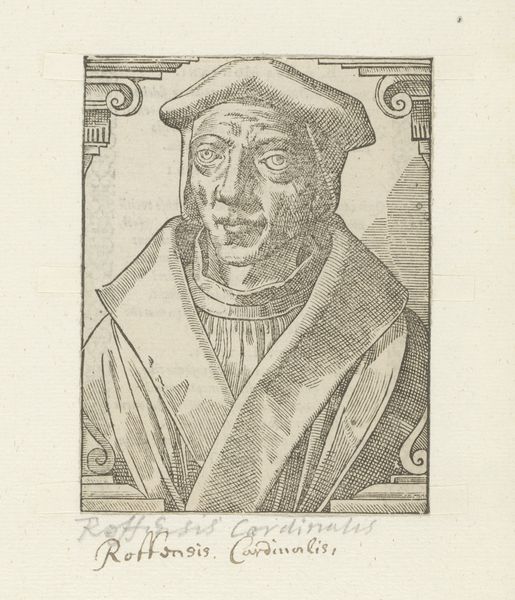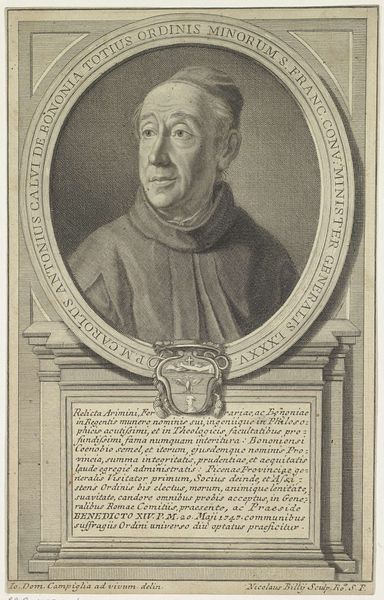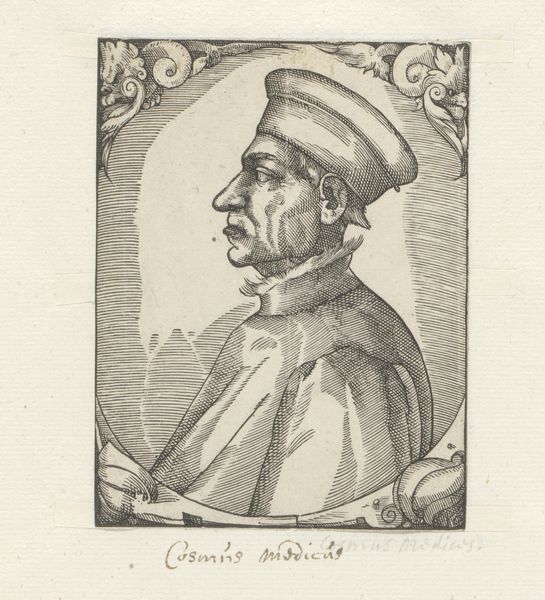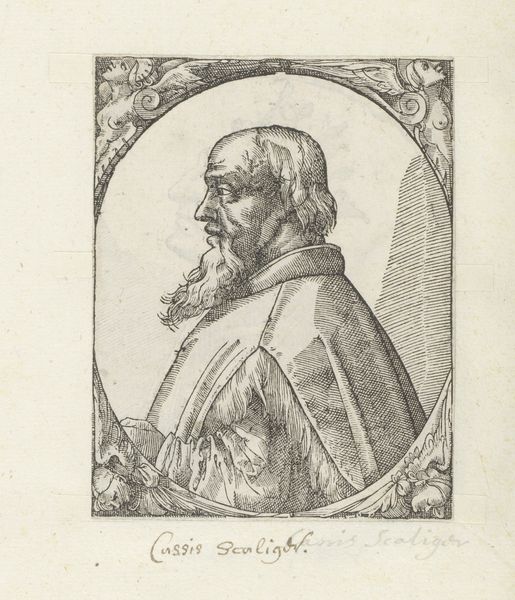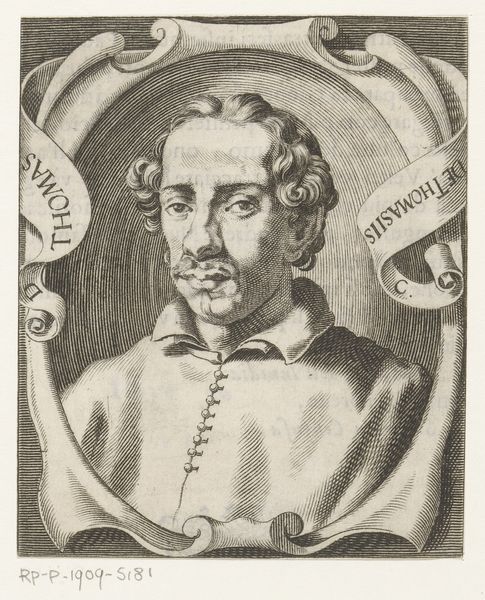
engraving
#
portrait
#
old engraving style
#
11_renaissance
#
history-painting
#
italian-renaissance
#
engraving
Dimensions: height 109 mm, width 85 mm
Copyright: Rijks Museum: Open Domain
Curator: This engraving presents us with a portrait of Christopher Columbus, believed to have been created sometime between 1549 and 1575. It's an anonymous piece, rendered in the Italian Renaissance style. Editor: It has a very stoic and almost weary feel about it, doesn't it? The fine lines of the engraving give a sense of detail but also of fragility. He's framed by these decorative scrolls which, to me, amplify a kind of visual confinement. Curator: That’s an interesting point, particularly regarding the composition. We must remember that the Italian Renaissance, while heralding exploration, also cemented power structures and this portrait does perhaps participate in the valorization of conquest and domination over indigenous peoples. How do the visual symbols contribute to this? Editor: Well, his direct gaze certainly asserts authority, yet the way he’s holding what appears to be a navigational tool, like a compass or a map, implies knowledge and control, both literally and figuratively. The clothing seems quite ordinary however; not exactly royalty! Curator: Absolutely. It humanizes Columbus, but also normalizes, perhaps even sanitizes, the devastating historical implications of his voyages. The Italian Renaissance aesthetic, steeped in classical ideals, adds layers of complexity, positioning him within a lineage of European achievement, at the expense of the lived realities of indigenous communities. Editor: Yes, there’s a strong visual encoding that suggests order, rationality, European identity but what about those outside this limited, framed circle? Is anyone ever truly at the 'centre' of their own narratives if images are being co-opted elsewhere to endorse actions done during colonialism? That gaze; the compass…it makes one reflect, no? Curator: Indeed, the piece urges us to reconsider the narrative of discovery, its aesthetic charm against its historical toll, to confront uncomfortable truths about power, representation, and the legacies that echo across centuries. It challenges viewers to interrogate not just the "who" and "what", but crucially, the "how" and "why" of historical depictions. Editor: In this image we have both authority and quiet knowing rendered using the art conventions of that time...art really has to work harder now to challenge perception and call on us all to re-evaluate images and intent. Curator: Yes, art forces conversation!
Comments
No comments
Be the first to comment and join the conversation on the ultimate creative platform.
